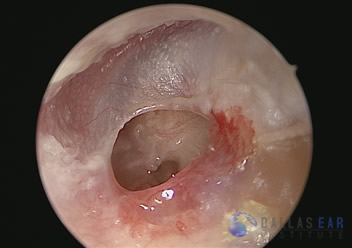EAR -TRAUMATIC EAR PERFORATION
Traumatic ear perforation
Traumatic perforation of the tympanic membrane causes sudden severe pain sometimes followed by bleeding from the ear, hearing loss, and tinnitus. Hearing loss is more severe if the ossicular chain is disrupted or the inner ear is injured.Signs and symptoms of a ruptured eardrum may include:
- Ear pain that may subside quickly.
- Mucuslike, pus-filled or bloody drainage from your ear.
- Hearing loss.
- Ringing in your ear (tinnitus)
- Spinning sensation (vertigo)
Simple traumatic tympanic membrane perforation (TTMP) remains the most common type of trauma – induced otologic dysfunction. 5Treatment of TTMP range from inactive watchful waiting, active intervention to surgical intervention. Otolaryngologists have however been advised to be reluctant in offering surgical intervention in cases of TTMP without significant symptoms as most patients will heal spontaneously within two months. Active interventions include topical application of substances like epidermal growth factor, enoxaparin, and ascorbic acid to stimulate epithelization for quick closure or to prevent formation of sclerotic plaques in the perforated membrane.

Surgical intervention are indicated in cases of complications like perilymph fistula, facial paralysis, severe vertigo, or profound sensorineural hearing loss. Such diagnosis should be made early and treatment offered promptly.Surgical treatment included exploration and tympanoplasties, closure of the perforation with stents in the form of simple patches, or as patches laden with substances in the form of silk fibroin membranes, or steri-strips patching. These technical surgeries require high expertise and necessary equipment which may not be readily available in the low socio-economic countries. In such less ideal situations, it will be necessary to characterize traumatic tympanic membrane (TM) perforation if optimal treatment is desirable. Our hospital is a relatively high volume trauma center and cases of injuries to the ears involving the tympanic membranes are readily seen. Characterizing such lesion will provide an impetus for better management of affected patients.
